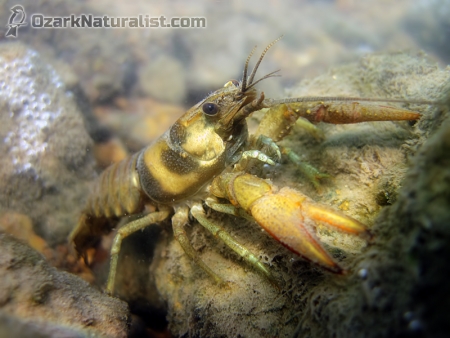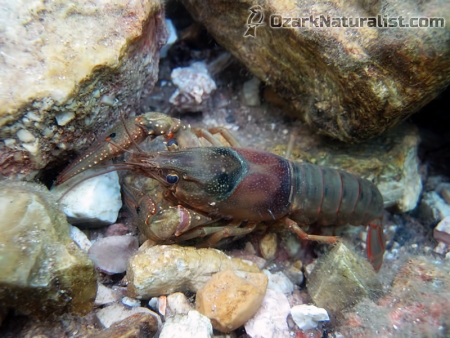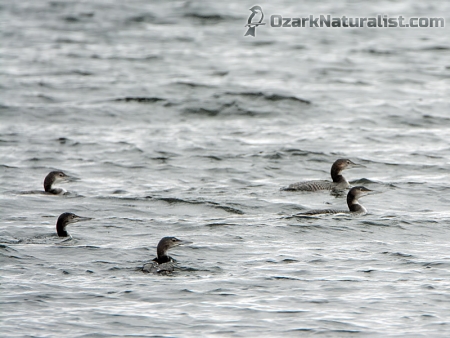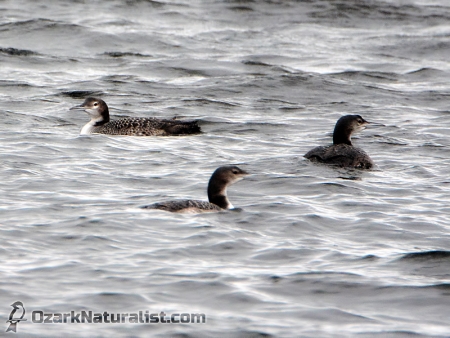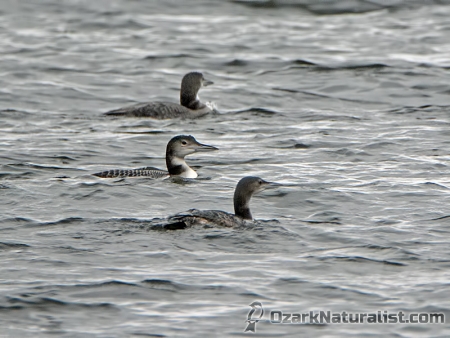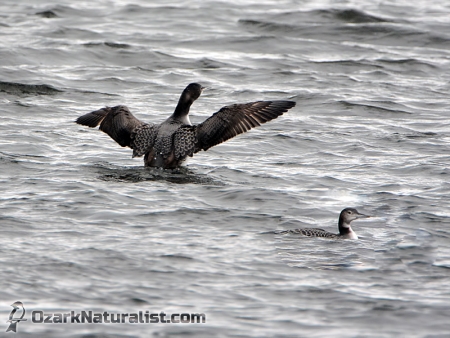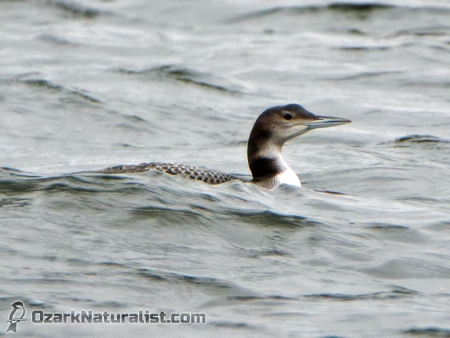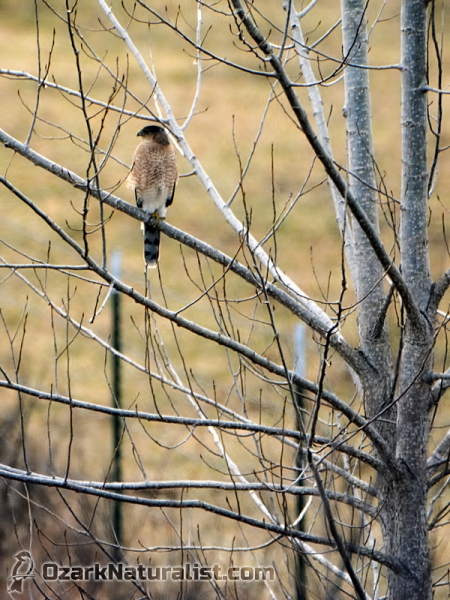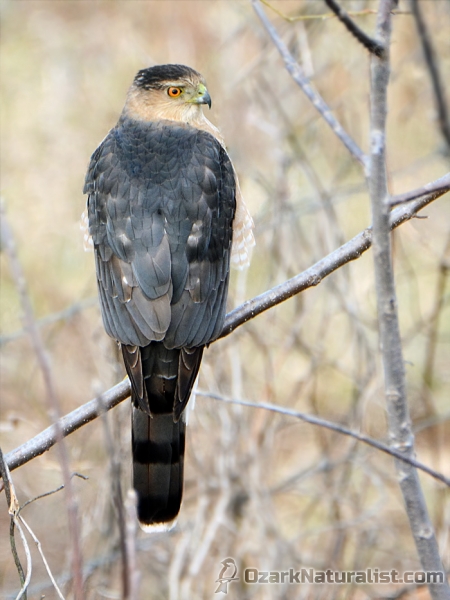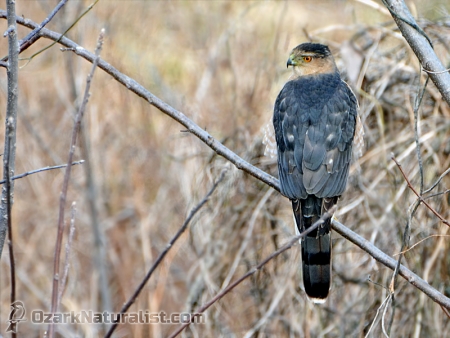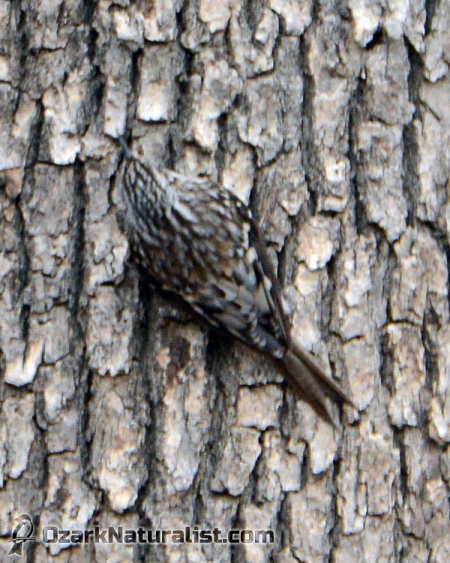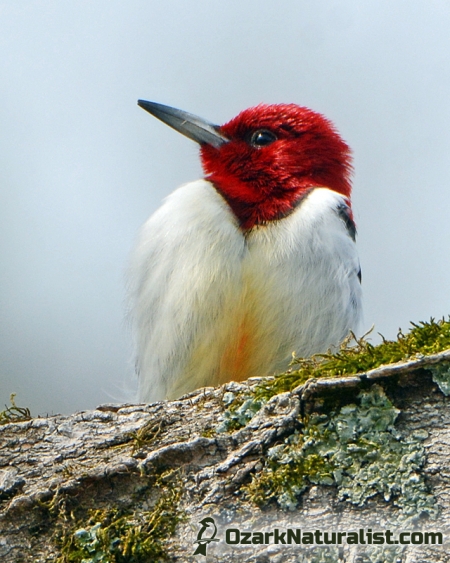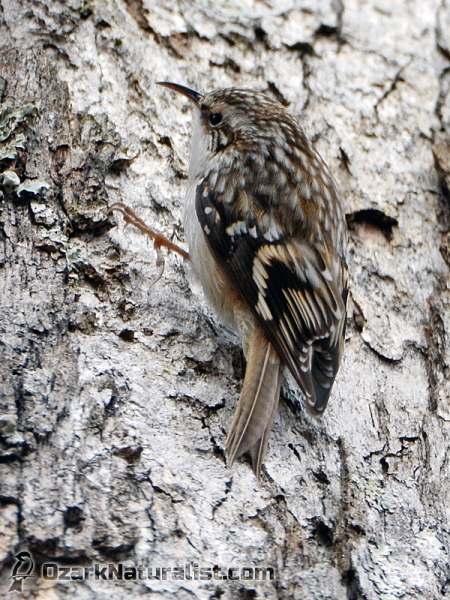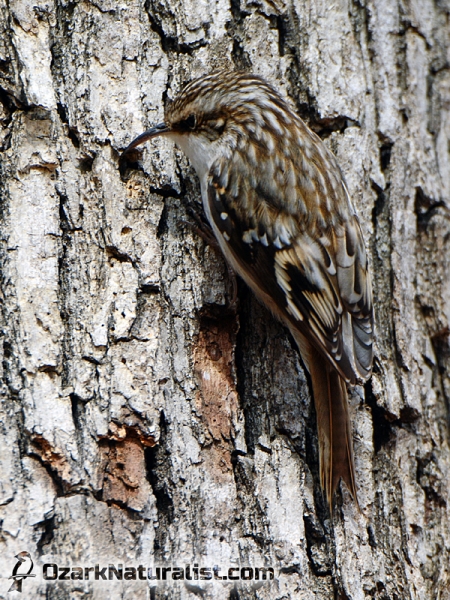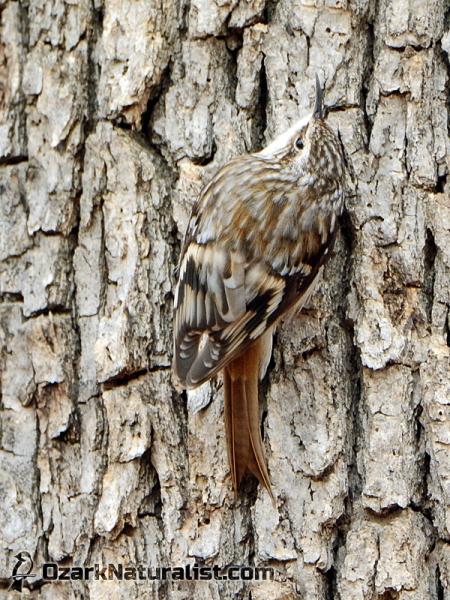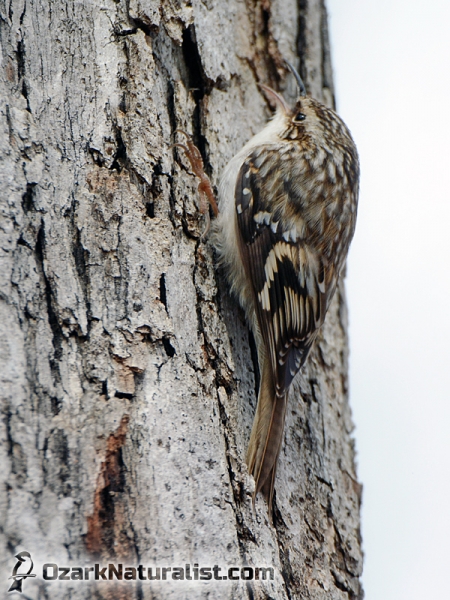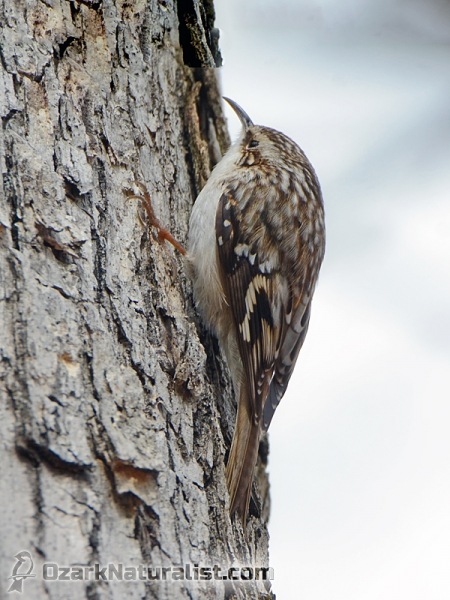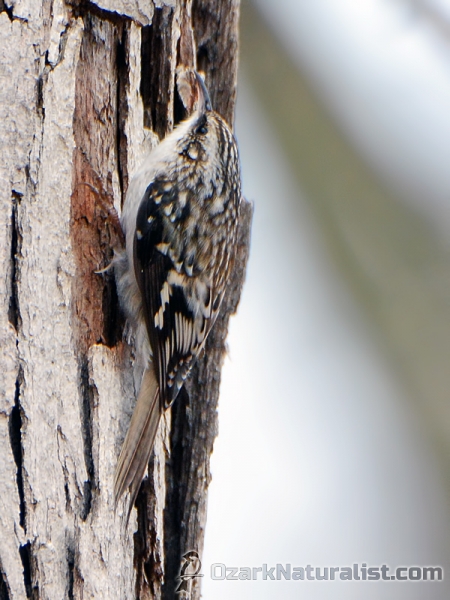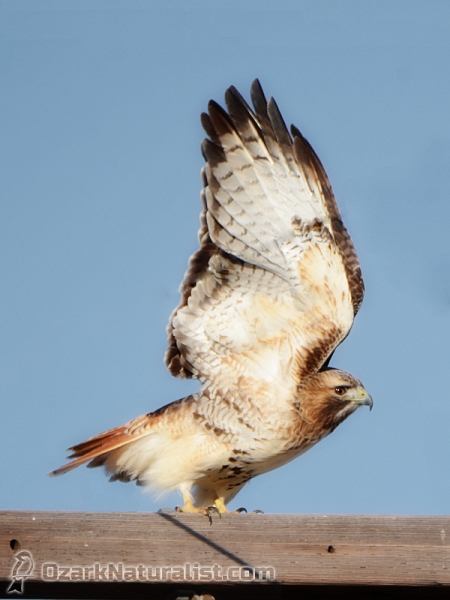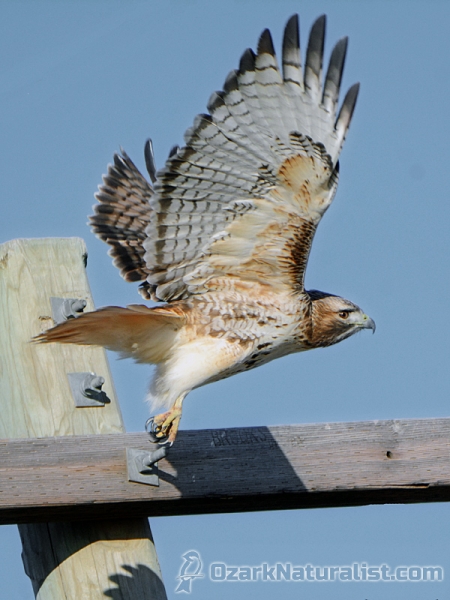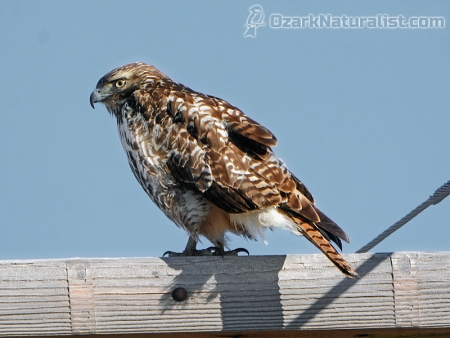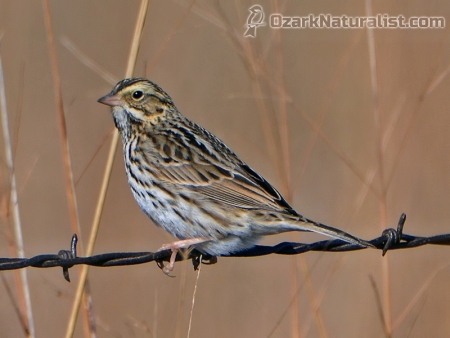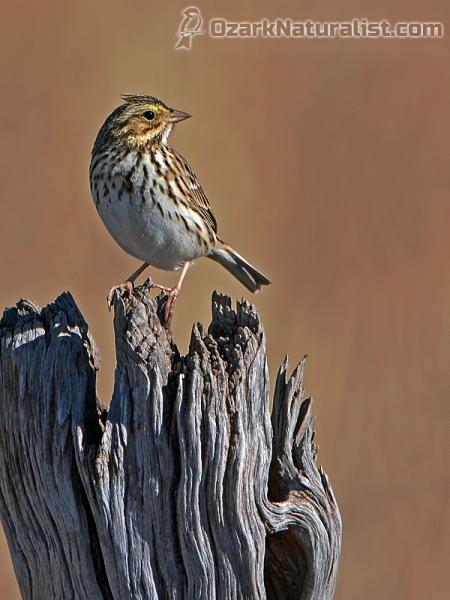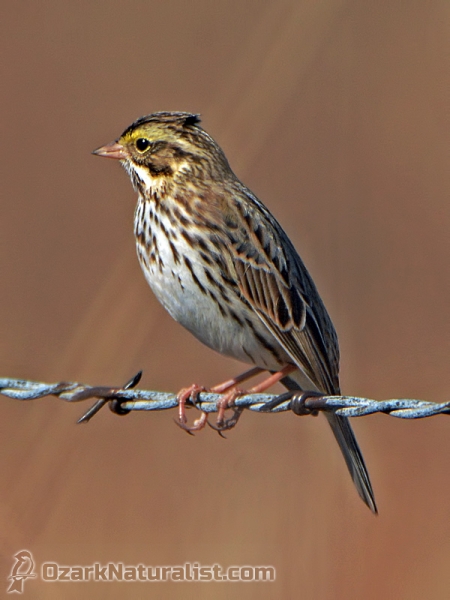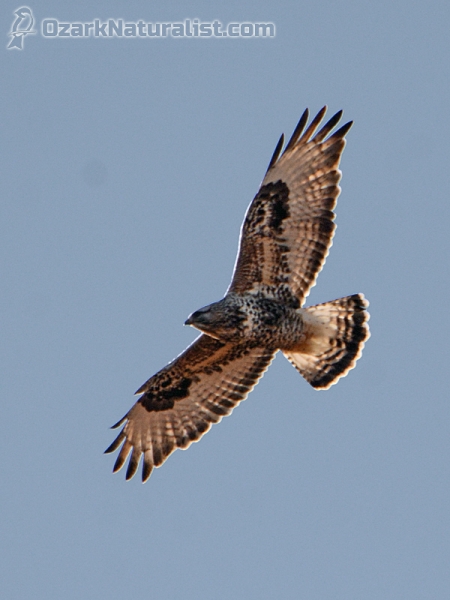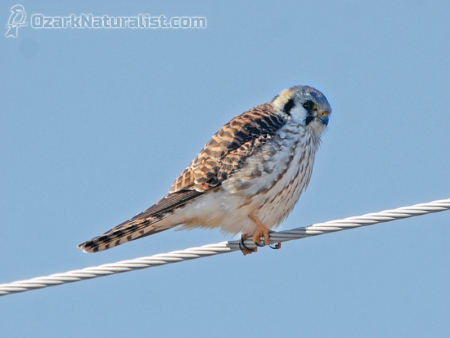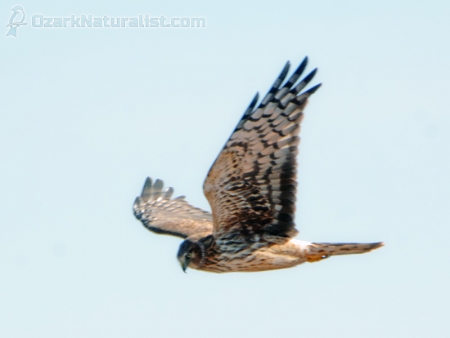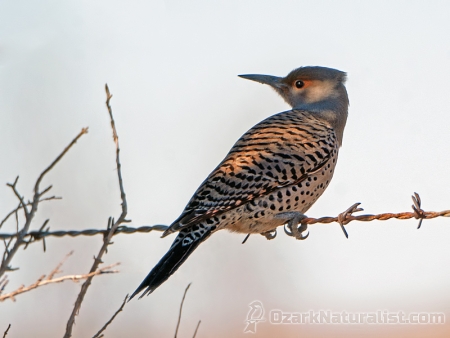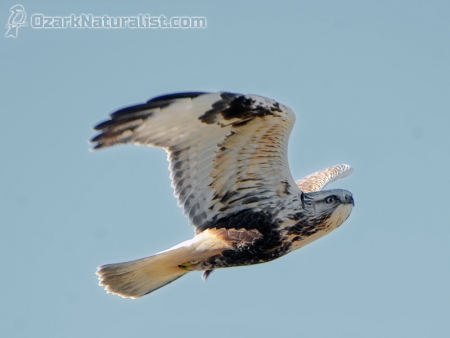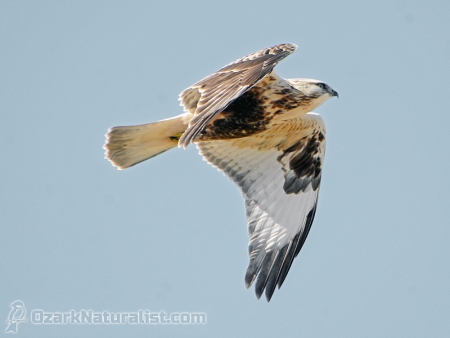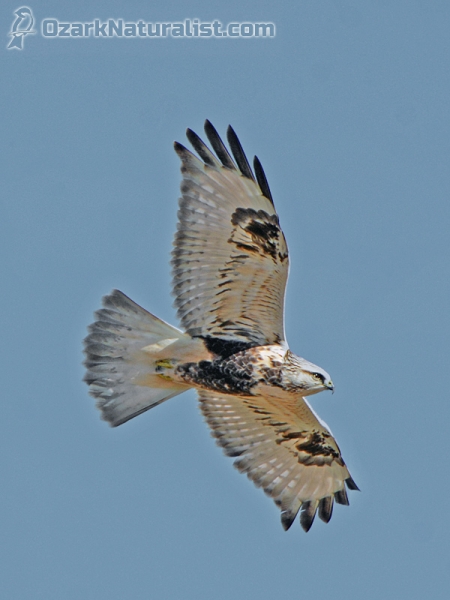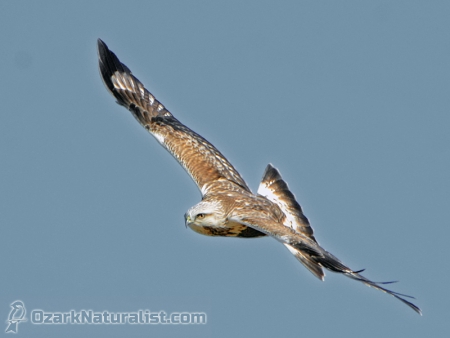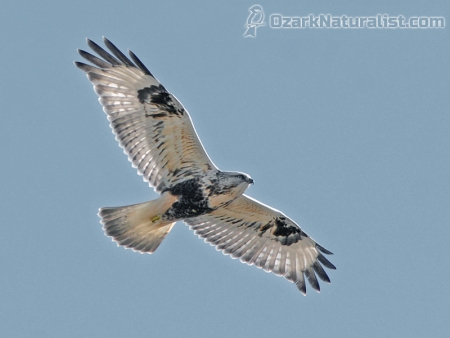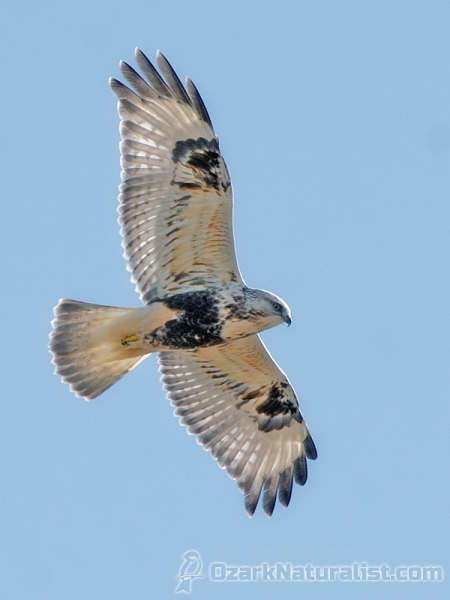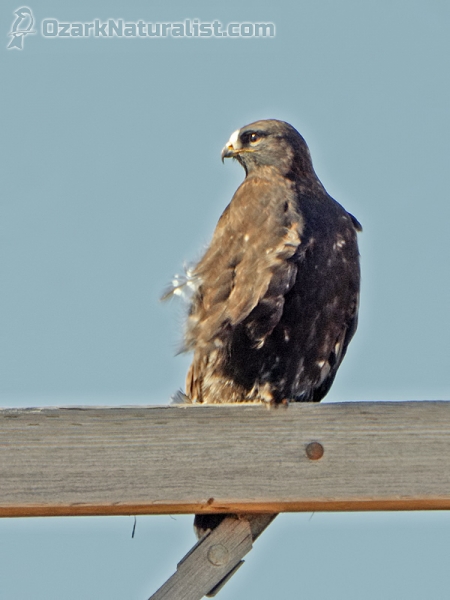|
|
A few months ago, I allowed the USGS to use some of my crayfish photos on their invasive species site. I recently went to see the page where one of those photos was used and was shocked, shocked I tell you.
Instead of Orconectes luteus, the page was titled Faxonius luteus. WTF? How could USGS use the wrong name for a crayfish? I was about to send them a nasty-gram with that very question when I noticed the following, lower on the page:
Faxonius luteus underwent a reclassification in August 2017, changing the genus of non-cave dwelling Orconectes to Faxonius.
My heart stopped and dizziness overtook me. Lying on the floor, I screamed “NOOOO!! You can’t take my Orconectes! You CAN’T! I LOVE Orconectes. Why would you do that?” followed by a bout of pitiful sobbing.
The crayfish formerly known as Orconectes marchandi, 9 June 2012, Martin Access, Warm Fork of the Spring River, Oregon County, Missouri.
Once I regained my composure, I found the citation for the study responsible for the reclassification:
- Crandall, K.A. and S. De Grave. 2017. An updated classification of the freshwater crayfishes (Decapoda: Astacidea) of the world, with a complete species list. Journal of Crustacean Biology 37(5):615-653. https://doi.org/10.1093/jcbiol/rux070.
and downloaded a copy. Reading through it, I located the section relevant to my despondency:
Similarly, the representatives of Orconectes form at least two distinct groups. The nominal group (the “cave Orconectes”) form a monophyletic group that is more closely related to members of Cambarus, while the remaining “Orconectes” are more closely related to Barbicambarus, Creaserinus, and other species of Cambarus (Crandall & Fitzpatrick, 1996; Fetzner, 1996). As the type species of Orconectes, Orconectes inermis (Cope, 1872), belongs to the cave-dwelling group, the genus is herein restricted to just those taxa. The surface-dwelling taxa now excluded from Orconectes sensu stricto are herein placed in the resurrected genus Faxonius Ortmann, 1905a, the oldest available name previously considered to be a synonym of Orconectes Cope, 1872.
Doctors Crandall and De Grave did what scientists tend to do; they re-examined the relationship between crayfish species and then revised the taxonomy. Determining that the cave- and stream-dwelling Orconectes are not that closely related, they split them into separate genera.
Because cave-obligate Orconectes inermis was the first species placed in the genus—separated from the genus Cambarus due to the absence of visual organs (also called “eyes” by the less sophisticated among us)—the cave-dwellers get to keep the name. Faxonius was the oldest name synonymous with Orconectes—I think it was first used in Ortmann, 1905—so the stream-dwellers were reassigned to a genus of that name.
There is no shame in being a member of the genus Faxonius. It’s named for William Faxon, a prominent astacologist in the 19th and early 20th centuries, who contributed a number of crayfish-related papers to the literature.
A man after my own heart, he was also an ornithologist of some note, the one who demonstrated that Brewster’s Warbler was a hybrid between Golden-winged and Blue-winged Warblers instead of a separate species. So I can’t argue that he is unworthy of a genus named after him.
But Orconectes does have a certain je ne sais quoi that Faxonius lacks. Maybe it just rolls off the tongue more smoothly. Hell, I don’t know. My real problem, I suspect, is that I just don’t like change, period, and will resist it instinctively. Plus I have all of those damned files that will have to be renamed.
Faxonius punctimanus, 21 July 2011, Current River @ Big Spring, Carter County, Missouri.
Resistance, I hear, is futile, so I bow to the wisdom of the experts and accept Faxonius in lieu of Orconectes. But I don’t have to like it. Grumble, grumble, grumble.
References:
- Cope, E.D. 1872. On the Wyandotte Cave and its fauna. American Naturalist, 6: 406–422.
- Crandall, K.A. & Fitzpatrick, J.F. Jr. 1996. Crayfish molecular systematics: Using a combination of procedures to estimate phylogeny. Systematic Biology, 45: 1–26.
- Fetzner, J.W. Jr. 1996. Biochemical systematics and evolution of the crayfish genus Orconectes (Decapoda: Cambaridae). Journal of Crustacean Biology, 16: 111–141.
- Ortmann, A.E. 1905. The mutual affinities of the species of the genus Cambarus, and their dispersal over the United States. Proceedings of the American Philosophical Society, 44: 91–136, pl. 3.
A light rain fell, not enough to help with the ongoing drought, but enough to get you wet if you didn’t have enough sense to stay out of it. A stiff wind made the forty-degree temperature feel like thirty and swells roiled the surface of Fellows Lake, an 850-acre impoundment on the Little Sac River, five miles north of Springfield, Missouri.
Parked at the marina boat launch, we scanned the lake with binoculars, trying to find the Red-throated Loon reported by the eBird Rare Bird Alert the day before. We had seen Pied-billed Grebes, American Coots and a raft of Buffleheads, but no loons (other than the three in the car.)
As we were about to give up, I spotted 8-10 loons to the west, a flotilla of dreadnoughts cruising parallel to the bank, moving away from us. According to the eBird Alert, the Red-Throated Loon was associating with a group of Common Loons, so this was a good sign.
With no spotting scope, I needed to get closer. The shoreline curved north into a cove and the birds were moving out of sight. I left the car and headed along the shore, but angling north on an intercept course.
Thanks to the drought, the water level was at least 10 feet lower than normal. This left the thicket of buttonbush that lined the shore high and dry. The buttonbush provided cover for me as I approached, but presented a formidable barrier once I got close.
Peering through the brush, I could see the birds though they were further out than I had hoped.
Oh so carefully, I inched my way through the buttonbush. Not an easy task for a man my size and I collected several bloody scratches on my arms for my efforts.
Staying inside the brush and using it for cover, I scanned the birds to see if the Red-throated was present. At least eight Common Loons bobbed with the swells, but none would morph into the Red-throated.
I watched for a few minutes, getting wetter and wetter. I managed to catch one bird stretch and flap his wings. Makes me wish I had been closer and the light hadn’t been so shitty.
Soaking wet and with water dripping from my camera, I no longer cared if I spooked the birds. Leaving the cover of the buttonbush, I walked directly to the water’s edge, moving as close to the loons as I could get.
This was the best shot I got all day. I’m not delusional, I know it’s crap along with the rest. But considering the conditions I was shooting under—the rain, the wind, and the dark leaden sky—they could have been worse.
This past week, the same day I photographed the Brown Creepers in my last post, I was headed home after work, when my good karma paid off. Just before my turn, I saw this on the roadside.
A Cooper’s Hawk can be difficult to distinguish from a Sharp-shinned, but this one was large enough to remove any doubt. This was a Cooper’s and likely a female since they are larger than males.
Still running 70 mph, I could not stop in time to pull over. That meant turning around, driving a mile back and making another pass. Ready this time, I stopped at a distance, shooting the photo above before moving closer.
Unfamiliar with their behavior since this was the first Cooper’s I had ever “worked,” I didn’t have any idea what to expect. Do they sit and let you approach or are they like Red-tails, so skittish that it seems they bail if you so much as think of pulling over.
The road was busy, with one 18-wheeler after another thundering past. I waited for a break in traffic so I felt safe, then crept down the shoulder. Close enough to shoot through the passenger window, I killed the engine and stopped.
I had the camera halfway up and the hawk seemed like she was staying put. But as I found her in the viewfinder and the autofocus engaged, she took off, flying down the fence line and landing behind me.
She didn’t go far, maybe 100 yards, but I wasn’t backing up on the shoulder for even that distance. That was a conversation I did not want to have with a trooper and it’s a good way to get yourself dead. Considering another pass, I decided to try on foot because I did not want to deal with the traffic again.
Walking towards her, I would take a few photos, move 5 or 6 steps closer, shoot a few frames, and repeat. She let me get much closer than I expected, enough for frame-filling shots.
She was sitting still, which I appreciated, but other than changing the position of her head, she’s in the same pose in every shot. Getting alongside or past her so that I could get a profile or frontal shot would have been ideal.
However, she wasn’t that tolerant, flying into the field, then swinging back to the fence line a couple hundred yards in the other direction.
Back to the truck. I idled towards her new perch, one wheel in the grass to put as much distance between myself and the onrushing traffic as possible. But, done with my shenanigans, she disappeared into the trees along the creek. I blew her a kiss and thanked her for her patience.
Cooper’s Hawks do not occur here in large numbers though they are year-round residents. And to this point, the only photos I had were two blurry frames that I shot in the El Dorado Springs Dollar General parking lot.
So, Cooper’s Hawk was another nemesis bird, the second I had removed from my list that day and the third in two weeks. If they keep dropping at this rate, I won’t have any to pursue and that makes me sad. Of course, I am not going to keep checking them off at this pace, so I should have nemesis birds to chase for a while.
Let’s see: Golden Eagle (my absolute Grail Bird,) Harris’s Sparrow, Snowy and Short-eared Owls, and a host of migratory warblers among others. Yeah, I’m good for now.
While we’re still on the subject of nemesis birds, I’d like to mention another: the Brown Creeper. Creepers winter here and they’re reasonably common, but until recently, I was without a halfway acceptable photo of one.
They’re not especially wary and will generally let you approach, but they never stop moving, the way they cling to a tree means they always have their back to you and they blend so well with tree bard that I believe the lack of contrast makes it difficult for a camera to autofocus. Those three factors are why I have a bushel basket of photos like this:
And of course, there’s the fact that I typically spend most of my winter looking for raptors, along with waterfowl and sparrows. Creepers will be in the trees, so I’m simply not spending much time in their habitat.
I had been thinking about the fact that I still needed a photo of a Creeper, so when a free lunch hour materialized the other day I decided to see if I couldn’t rustle one up. I headed to the Peavine pavilion at Big Spring (well, where it used to be; the flood last spring erased it from existence) which sits on a terrace 100 yards from the river in a stand of large, mature Burr Oaks. There always seem to be woodpeckers, titmice, and chickadees about and when you find Creepers, they’re almost always part of a mixed foraging flock, so having those other birds around is a big plus, practically a necessity.
Opening the truck door, I immediately heard the nasally “yank” of a White-breasted Nuthatch across the road and a pair of Red-headed Woodpeckers calling to each other near the barricade (the campground is still closed, another casualty of the flood.) I got a couple of nice photos of the woodpeckers, this being my favorite.
From the corner of my eye, I caught movement on the trunk of a nearby tree. I had my first Creeper of the day, five minutes after I started looking. Before I could get closer and try for a photo, two additional birds revealed themselves, so now I have three to choose from. I love it when a plan comes together.
Picking the one in the most favorable position relative to the light, I started creeping slowly closer (see what I did there?). I nearly got bogged down crossing a recently excavated utility corridor, managing to escape with a heavy load of mud glommed onto my shoes. But the birds were still there, un-alarmed and working their way up and around a tree trunk, then flying to the base of another tree to repeat the process.
I got within 15 feet of my target bird and started shooting.
They’re adorable little buggers, aren’t they? Five inches from tip to tip, they make me think of a mouse, albeit one with a sharp bill and a woodpecker’s tail.
I followed them for 20 minutes as they moved from tree to tree, paying me little mind and allowing me to maneuver about as necessary. I even got a series of “on the edge of the tree profile shots” (or very nearly so) instead of just the monotonous top-down dorsal view. I ended up with twenty or so shots (out of a total of 80) that I wouldn’t be ashamed to post; the ones that I didn’t use here will go up on the Flickr page soon.
By this point, my lunch hour was over and I had to scrape all that damned mud off my shoes before heading back to town. The stop was profitable though, a nice return on a small investment of time, with another nemesis bird off the list. I’ll keep shooting Creepers in hopes of a better shot (there’s always a better shot,) but for now, I’m satisfied.
Oh, and bonus points to anyone who got the Scooby Doo reference in the title. Rooby Rooby Roo!
Day 2 of the Great Oklahoma Rough-Legged Hawk Expedition got off to an inauspicious start when we overslept by an hour. The only thing that really cost us though, was seeing the police arrest the “crazy woman” in the lobby, at least according to the desk clerk. I’m sorry we missed it; a little excitement to start the day is always nice.
We left the hotel, headed to IHOP for a quick breakfast. The ground was wet from the rain that had fallen during the night, but it was now clear and cloudless. And even more importantly, there was but a gentle breeze stirring the air, yesterday’s tempest a distant memory. We were off to a good start and ready to roll.
Until Brock turned green. I don’t know if it was something he had eaten (like the slightly dead cow and barnyard weeds he’d had at dinner the night before) or if he had picked up a microscopic hitchhiker. Either way, he didn’t look very healthy and kept telling me he was gonna hurl. But he sucked it up (not literally—get that image out of your head) and soldiered on.
We decided to bypass the Tallgrass Preserve and work the area to the west and north instead. So it was west on Hwy 60 until we reached the Osage Wind Farm, then north on Hwy 18 through Shidler. A few miles north of Shidler we planned to use a network of county roads to head east to Foraker, then north and west to Grainola, back on Hwy 18 a little short of the Kansas line.
I’m not sure what to make of the wind farm, at least a hundred of those massive turbines spread over 8400 acres. I know they produce clean energy, but I wonder what it costs in bird lives. I know we saw zero hawks while we were near the turbines and maybe that wasn’t a coincidence. But I digress.
We almost immediately began seeing hawks once we had left Pawhuska, though they were Red-tails instead of Rough-legs (“Red-tails and Rough-legs” has to be the name of a country song.) Like most Red-tails, many of them would take off if we even thought of stopping, but I did get a few photos.
This heavily marked beauty stayed put for a few seconds and let me grab a few frames.
I’m not sure if he’s a Harlan’s or a dark morph of one of the other races. Apparently, this area of Oklahoma is a melting pot of the different races during the winter, so neither would be a surprise.
We didn’t see much from the wind farm until we got on the county road between Hwy 18 and Foraker. Savannah Sparrows were everywhere now that the wind was no longer forcing them to cover and I photographed them until I grew a little bored.
Shortly before you reach Foraker, there was a large horse ranch on the north side of the road. I swear there were horses of any color you could imagine; If there weren’t at least 200 horses in view, I’ll kiss your big toe. Someone has a lot of money running around that field.
Stopped in the road staring at the horses, one of us finally realized there was a hawk hover hunting in the distance. He was the first Rough-leg of the day. Kind enough to move closer to the road, he even banked briefly, showing off his underwing markings.
Unlike most raptors, Rough-legs can be aged and sexed by differences in plumages. This bird lacks a well-defined, dark belly marking, and has more than 1 tail band, markings diagnostic of an adult male. Go here for a good write-up on distinguishing all the different variations of sexes, ages and color morphs.
The bird drifted off to the north and we started to leave. Then a distant speck appeared in the sky on the south side of the road, resolving itself into another hover-hunting bird. Then another appeared, and finally a third, all in view at the same time. We watched them for a while, but all were too distant to photograph and moving away besides. They wouldn’t have made good photo subjects anyway, backlit strongly by the winter sun.
We passed through Foraker, then turned to the north for a few miles. There were many more Savannah Sparrows (though curiously, no other sparrow species,) several Northern Harriers and an American Kestrel.
I shot frame after frame of the Harriers and as usual, they all were crap. This was the best of the lot
and it’s crap too. I consider Harriers a nemesis bird—I see them all the time, but I don’t think I’ve ever gotten a halfway decent shot.
Eventually, we reached the county road that led back to the west and Hwy 18. More Harriers, Red-tails and Savannah Sparrows kept us company. A small flock of Northern Flickers played keep away with us; as we got close, they would fly further down the fence line, never letting us close enough for photos.
Finally, one landed on the barbed wire in the shade of an Eastern Redcedar. He apparently thought he was hidden because he finally stayed put for more than 3 seconds.
The Flickers here were the Red-shafted variety instead of the Yellow-shafted we have in the Ozarks. The two were at one point considered separate species, but the powers that be lumped them together because they hybridise where the two populations meet. I think they had been lumped by the time I began birding—I remember people bellyaching because the lump had cost them a tick on their life list—so it’s been a while since they were separate.
We were nearly back to Hwy 18, and while we had seen several Rough-legs, we still hadn’t really had a decent photography opportunity and we were starting to lose heart. Our despair was premature, for we soon spotted another hawk perched on a snag ahead of us. A quick look through the binoculars showed a Rough-leg, the first we’d seen perched instead of hover hunting.
The bird was on the left side of the road and Brock was driving, so he got the first crack at him. He got some decent shots before he flew, but I wasn’t so fortunate, trying to shoot through the windshield, a losing proposition if there ever was one. The bird soon grew nervous, abandoned his perch and flew right in front of me, crossing left to right before banking to circle behind me.
The indistinct terminal band on the tail and dark trailing edge of the wings mark this as a juvenile bird, though I can’t say whether it was male or female.
Regardless, he was kind enough to make several circuits around us, low and slow, before climbing and eventually moving off to the south. I shot over a hundred images
and while I’m actually happy with these, this one was my favorite.
This shot will soon be framed and hanging in my office at work. A 10×20 print should do the trick I think.
We reached Hwy 18 a few minutes later and headed south back to Hwy 60. There were more Red-tails, Kestrels, Harriers and Meadowlarks (Eastern or Western? I don’t know.), but no good photo opportunities, mainly because Hwy 18 has no shoulder safe to pull over on.
We were on Hwy 60, almost back to Pawhuska and thinking it was about time to start the long drive home when we spotted a very dark hawk on a power pole. So one last time, we made a U-turn and headed back. Brock pulled to the shoulder and I got off a few frames before the hawk bailed on us.
I’m not sure what this bird is. Both Red-tails and Rough-legs have a dark phase like this and it could have been either. If either the legs or tail was visible, I could probably say which. But they aren’t and I can’t.
Rough-legs have proportionally smaller beaks than Red-tails and the beak on this bird looks small to me, but I’m not sure. Not enough to say it is a Rough-leg.
On the other hand, he bailed mighty quickly on us and flew directly away from us, both of which are pretty typical of a Red-tail. From what I’ve read, Rough-legs aren’t as spooky, but as you know, I have virtually zero experience with them, so I’m not comfortable saying whether a Rough-legged would sit or scatter in that situation.
Bottom line, I simply don’t know what species it was. And as much as that bugs me, there’s not a damned thing I can do about it.
By this point, according to Google Maps, we had covered 82 miles since we had left Pawhuska earlier in the morning. We were both already getting tired and we had six more hours on the road to look forward to. So we gassed up the car, grabbed a bite to eat and headed back towards home.
Other than me nearly running through the toll booth at the exit to I-44, it was an uneventful trip home. The Expedition was over and I’d call it a success. Now that I’ve been there and gotten a feel for the area,I want to go back and do it again.
|
|
